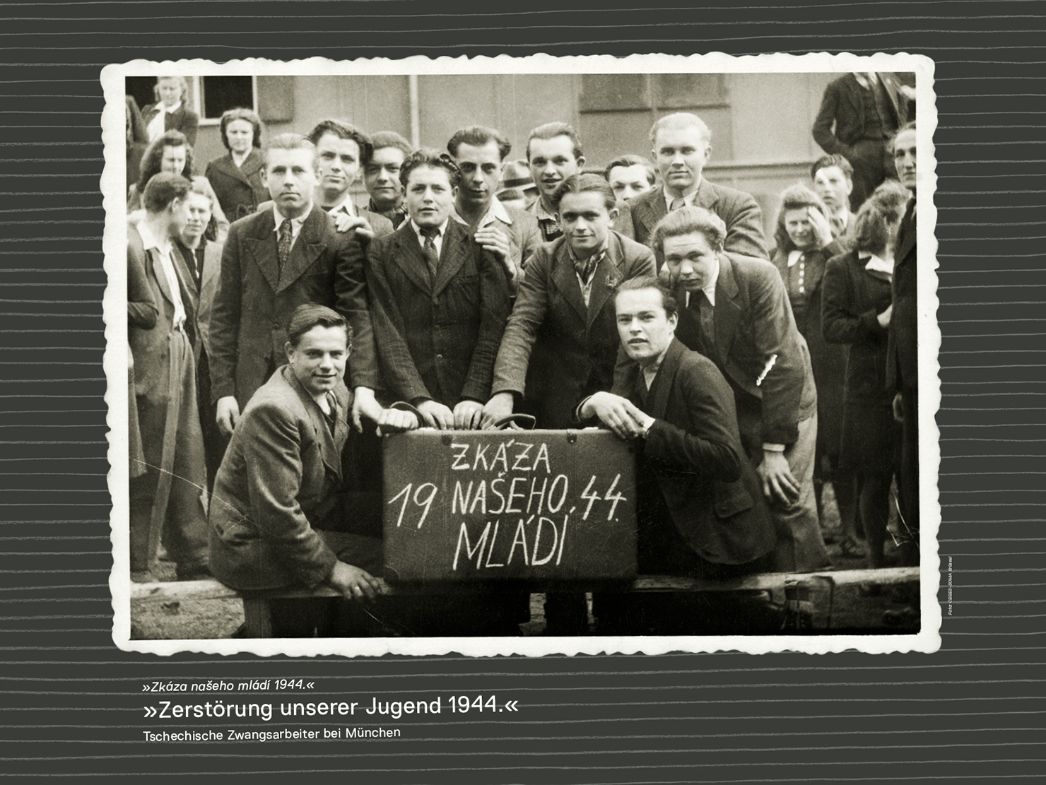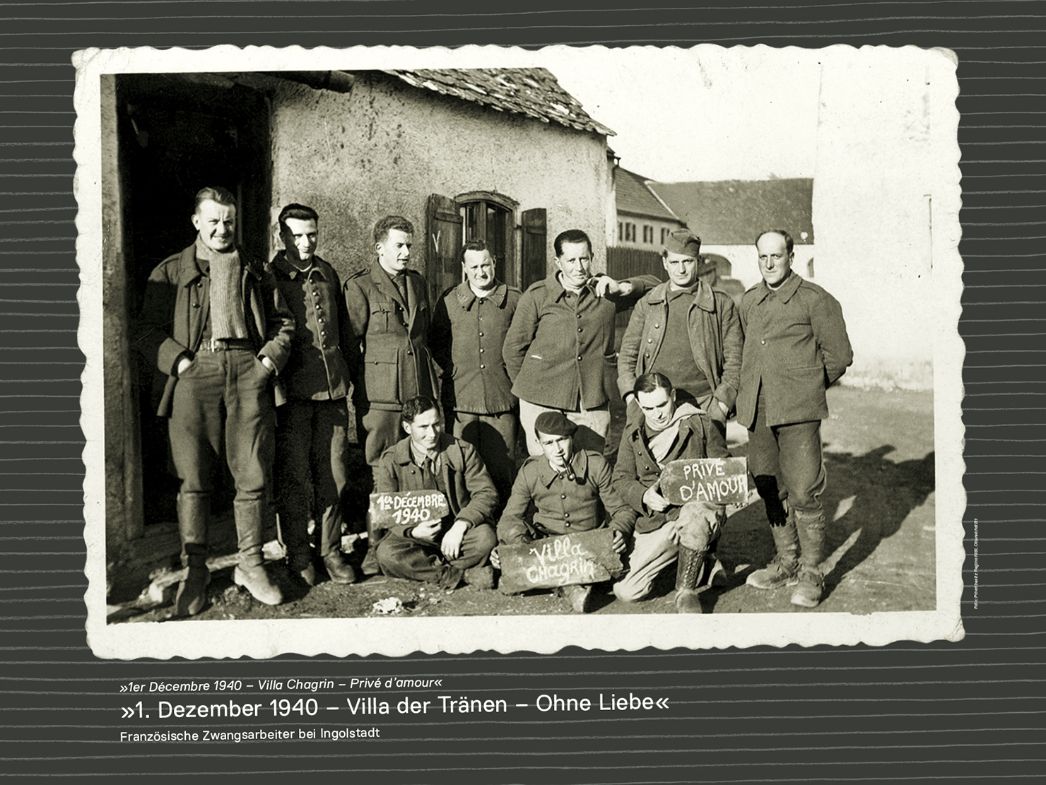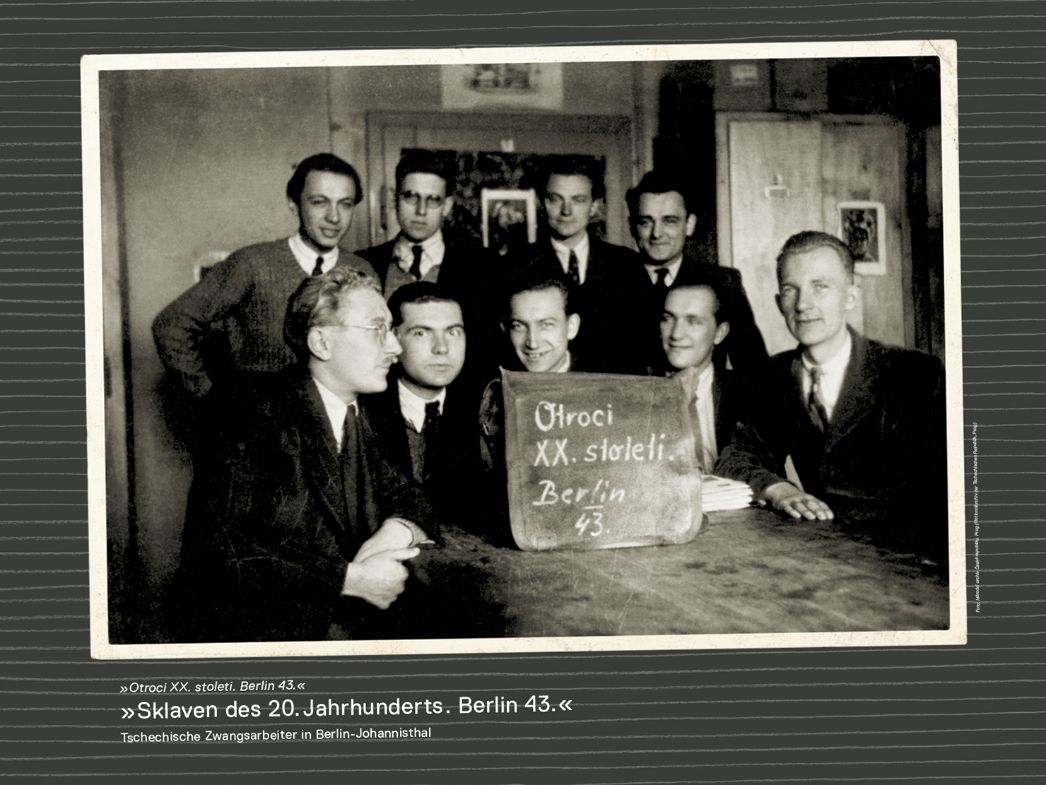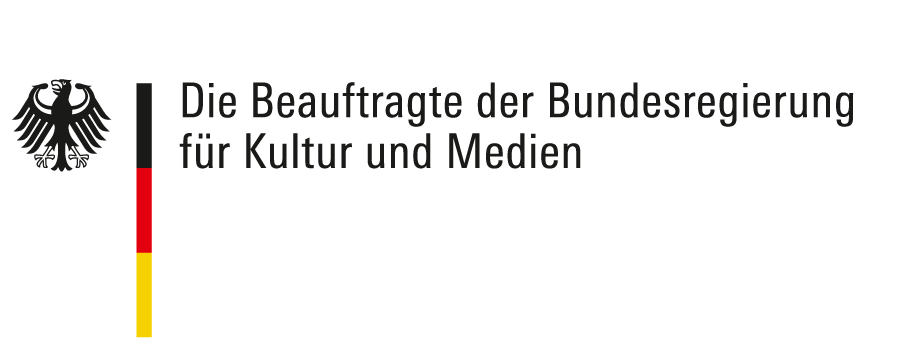
This is how Czech forced laborers who were deployed at BMW in Munich commented on their existence in 1944. They were housed in the Karlsfeld camp near Allach.
©Národní archiv České republiky, Fond Svaz nuceně nasazených, Prag
Particularly common are photographs like these taken by individuals from the Netherlands, Belgium, France, and Czechoslovakia, who were allowed to have cameras, in contrast to Soviet or Polish forced laborers.

A group of French prisoners of war were interned in the Geolfing camp near Ingolstadt and worked for farmers in the area. They were probably taken prisoner of war in the summer of 1940. On December 1, 1940, the photo was taken and annotated in front of the barracks where they had to live.
©Privatbesitz Clemens Nißl, Obereichstätt
Contemporary observers might have the impression that these people were just sitting together normally. Maybe it was one person's birthday. Were others celebrating Christmas? Maybe they wanted to take a photograph of themselves to remember the event? Everything was “normal”?

This is how Czech forced laborers characterized themselves. In 1943, they were housed in the Johannisthal camp of the Ambi Budd wheelwright company in Berlin.
©Dokumentationszentrum NS-Zwangsarbeit / Sammlung Berliner Geschichtswerkstatt
In order to counter this impression, forced laborers attached messages to the images. They described themselves as “slaves of the 20th century” and the “destruction of our youth.” Far away from their home and their families, they are “without love.” Their barracks is a “villa of tears.” They wrote their feelings and commentary on the situation on a small board, a suitcase, or whatever was close at hand.
The message was: Something is not OK here. This is not a normal photo keepsake. These are forced laborers, who were deported to Germany to slave away for the Germans. At the same time: We are not going to let ourselves be demoralized or denigrated.
They were only a few of the over 20 million people from all over Europe, who had to perform forced labor in Germany under National Socialism.


